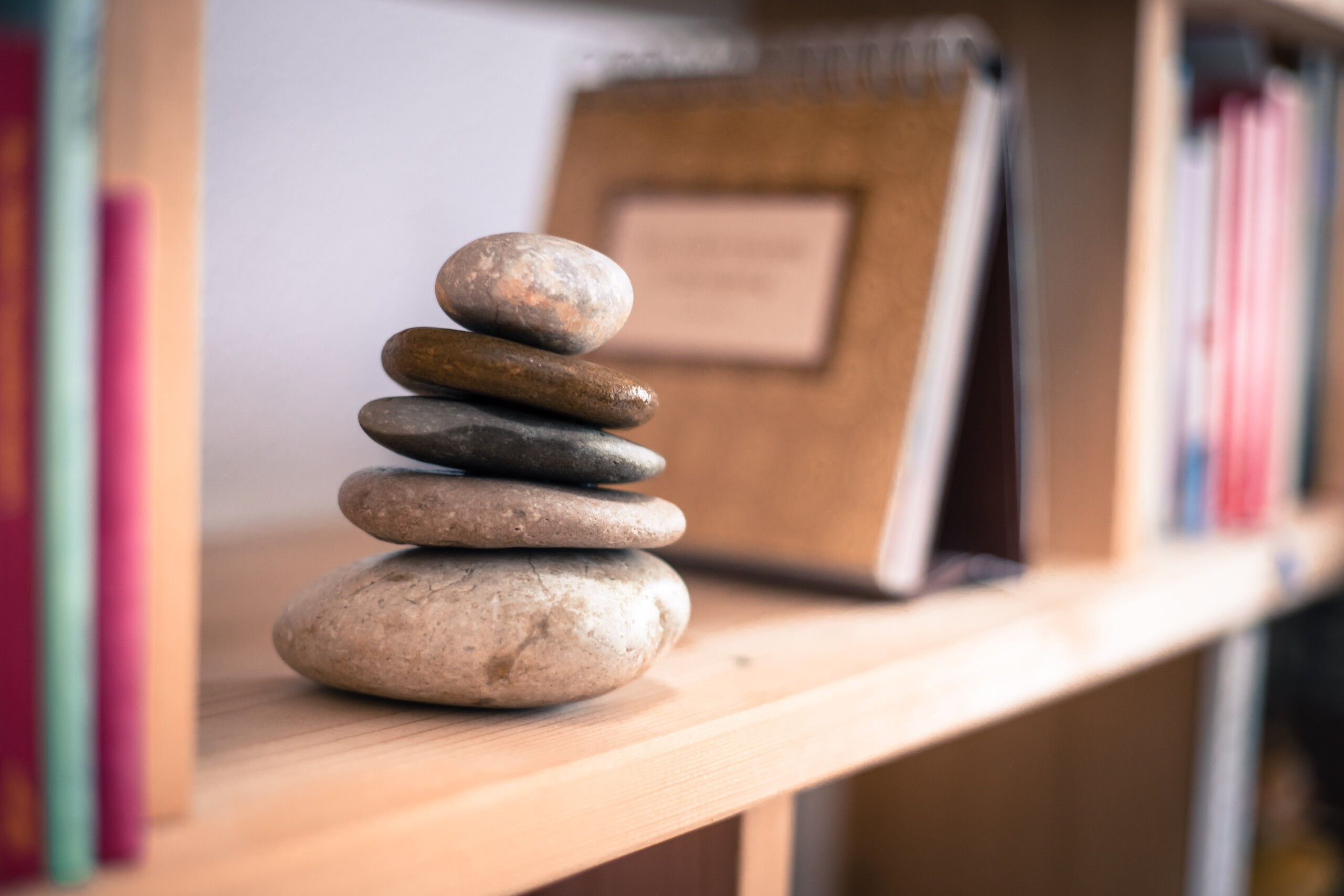Tired of all that clutter and rooms that just don’t help you feel relaxed no matter how much you try to switch off after work? Then it’s probably time to feng shui your home.
Unlike most interior styles, feng shui isn’t really about ticking certain decorative boxes and sticking to specific elements (although, don’t get us wrong: certain features and themes can help).
On the contrary, it’s the philosophy of creating a harmonious balance in your home to inspire a sense of calm and tranquility in your everyday life.
Let’s start by understanding this powerful concept.
What is feng shui in interior design?
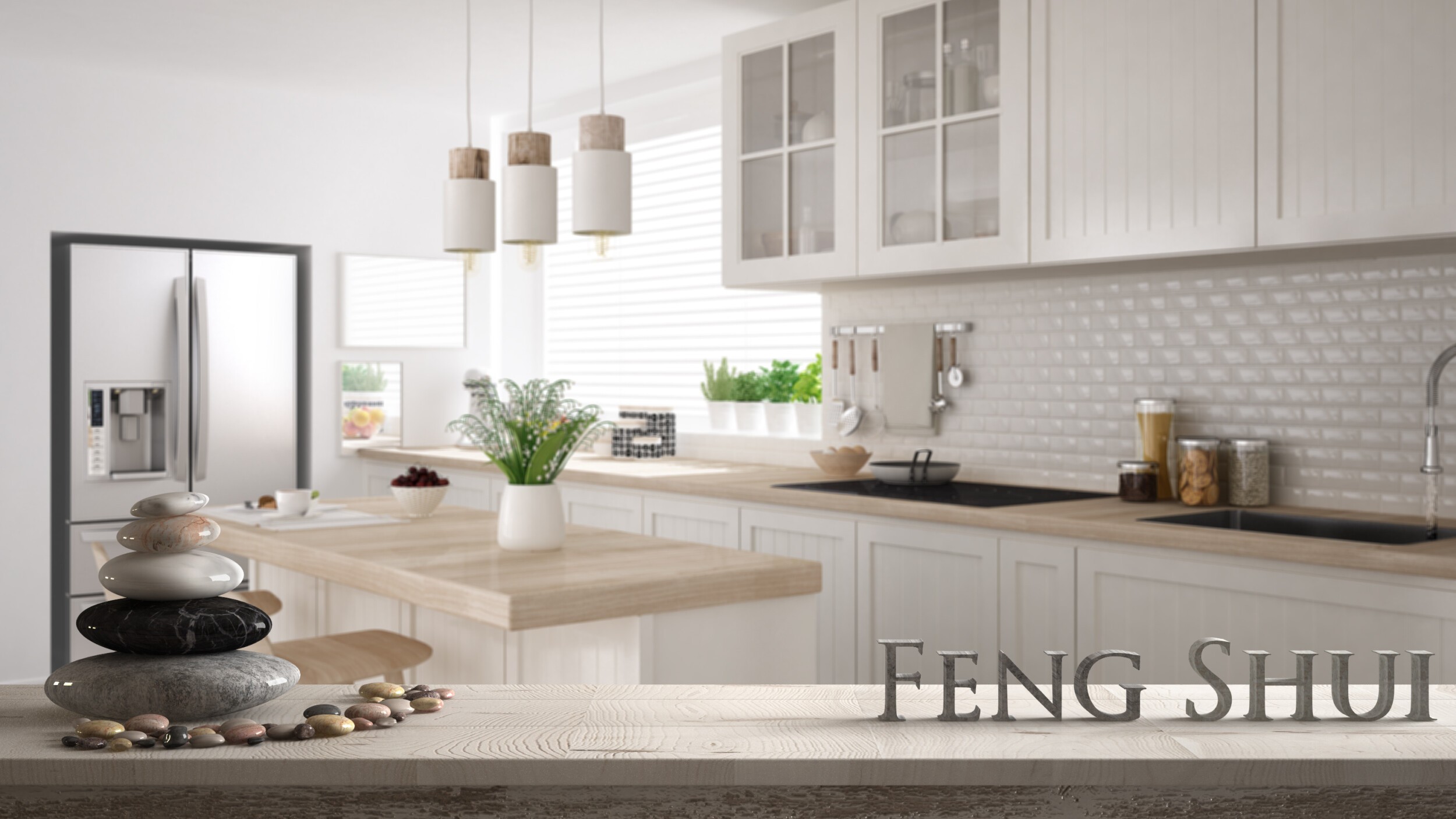
Feng shui literally means ‘wind water’ and is an ancient Chinese philosophy focusing on finding a balance between different elements by positioning them in a way that optimizes ‘chi’ (energy).
That’s why, when it comes to interior design, feng shui is more about getting rid of clutter and rearranging your existing furniture rather than sticking to a specific décor style.
No wonder it’s also known as ‘the art of placement’!
What you’ll love about feng shui:
- The sense of peace and balance that you’ll feel once your house has been ‘feng shui-ed’
- The connection to nature that you’ll develop
- The beauty of simplicity that you’ll learn to find in both your furniture and everyday life
- The fact that you’re not restricted by decorative rules and trends
How do I feng shui my house?
In order to feng shui your house in the best way possible for you personally, start by understanding the five elements of this philosophy.
Familiarize yourself with the 5 core elements of feng shui
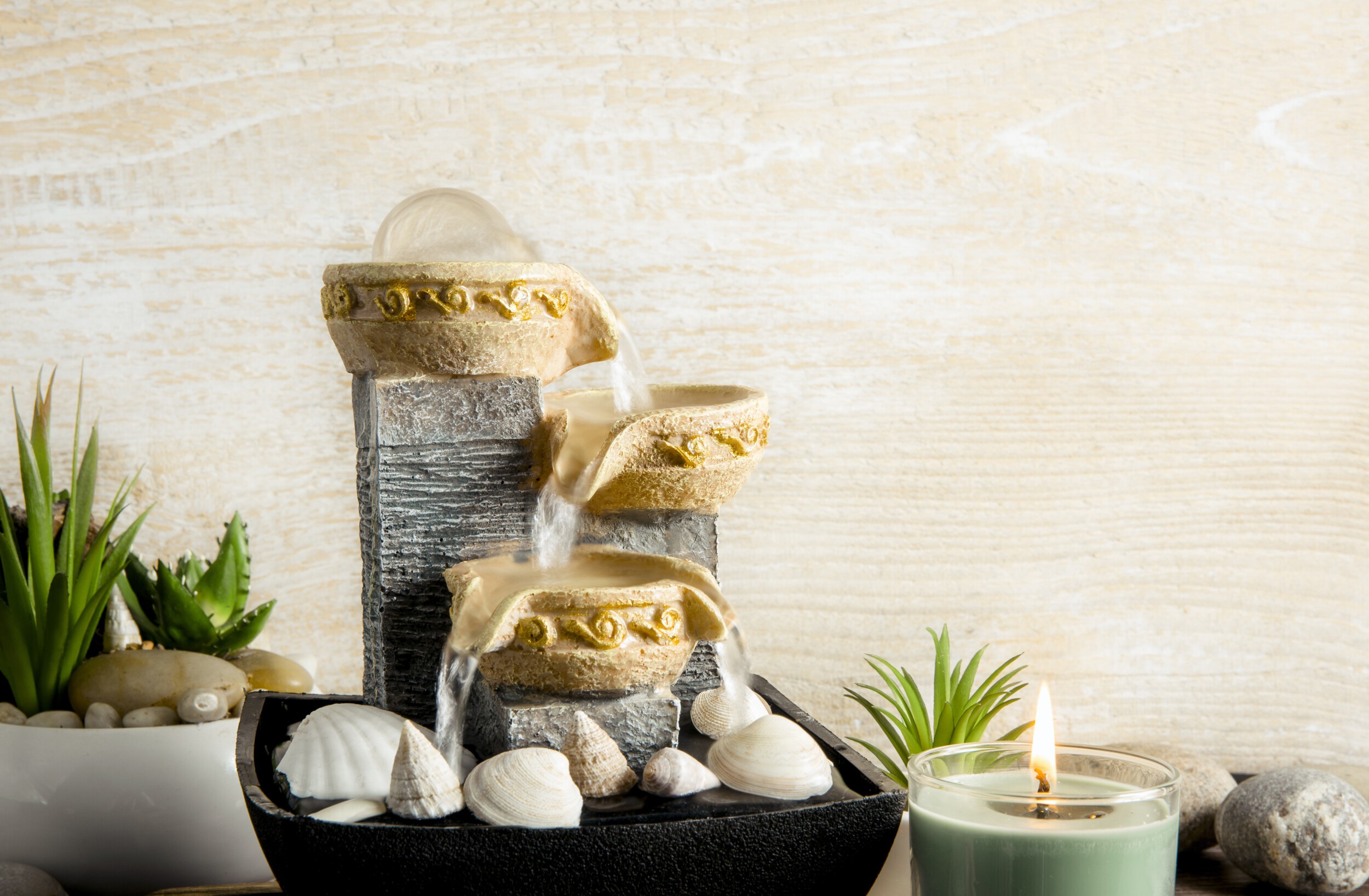
While the term focuses on wind and water, feng shui wouldn’t be complete without these five elements:
- Wood symbolizes both growth and vitality: add wooden furniture and plants to encourage your personal growth
- Metal symbolizes knowledge and logic, and you can incorporate it through metal frames and accents
- Earth symbolizes the balance that’s central to this philosophy: from rocks to artwork and crystals, introduce this element in your home to feel grounded and more stable
- Water symbolizes tranquility and wisdom: reflective surfaces, fountains, and aquariums can help you find both clarity and relaxation
- Fire symbolizes energy in its purest form as well as passion, which is why candles and a few red objects will allow you to celebrate transformation
Get rid of clutter before you move your furniture
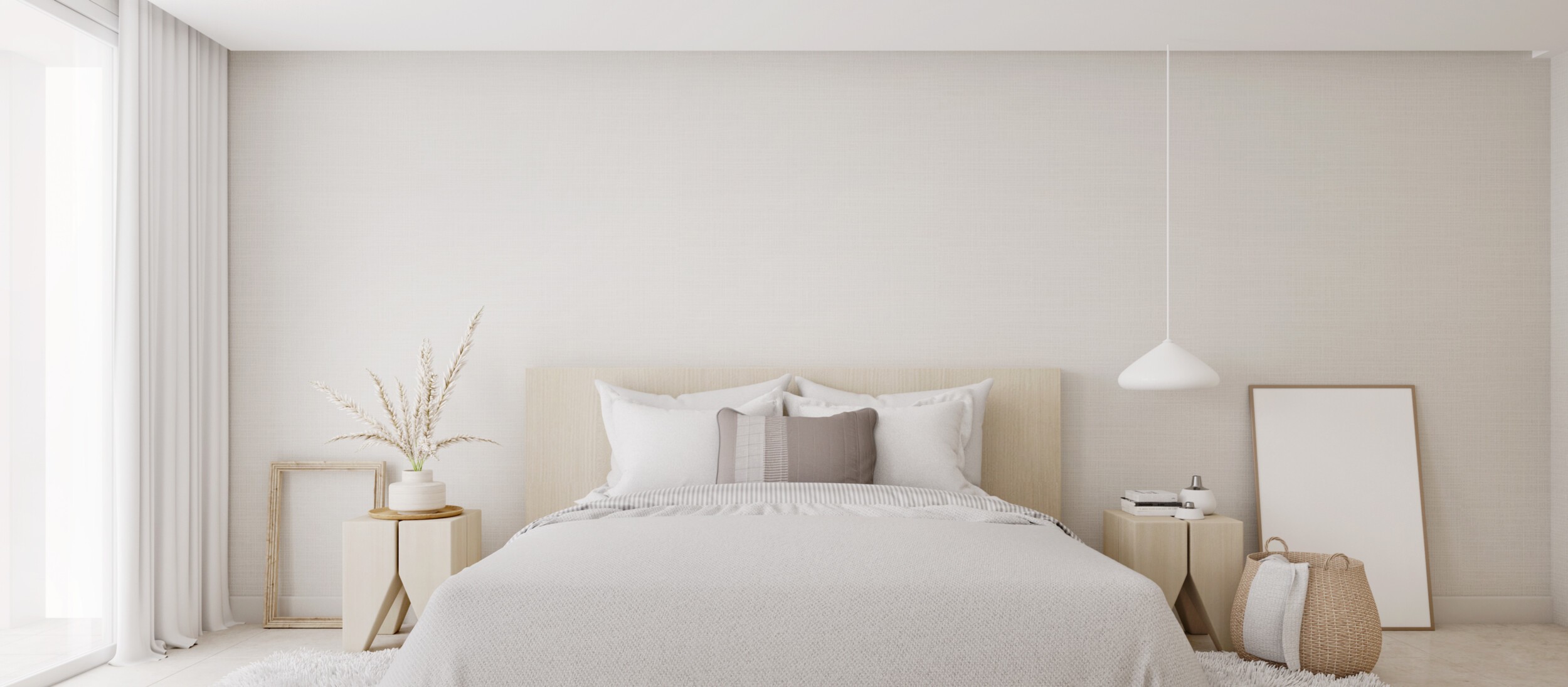
While there’s a lot more to it, minimalism is at the very core of a feng shui home.
This is because, if you remember, this philosophy focuses on maintaining a good energy flow and balance in your house, letting the chi move freely from room to room.
Guess what? Clutter gets in the way! It disrupts this natural flow and turns it into negative energy instead.
That’s why the best way to kickstart your feng shui process is to declutter first. You can’t start rearranging your furniture and belongings if they include tons of superfluous items.
Don’t worry: this doesn’t mean that you have to get used to a next-to-empty room. It’s simply about being intentional with every single piece of furniture or item that you own: it should either be functional or, if purely decorative, actually meaningful (but try and keep the latter to a minimum).
Prioritize simpler furniture
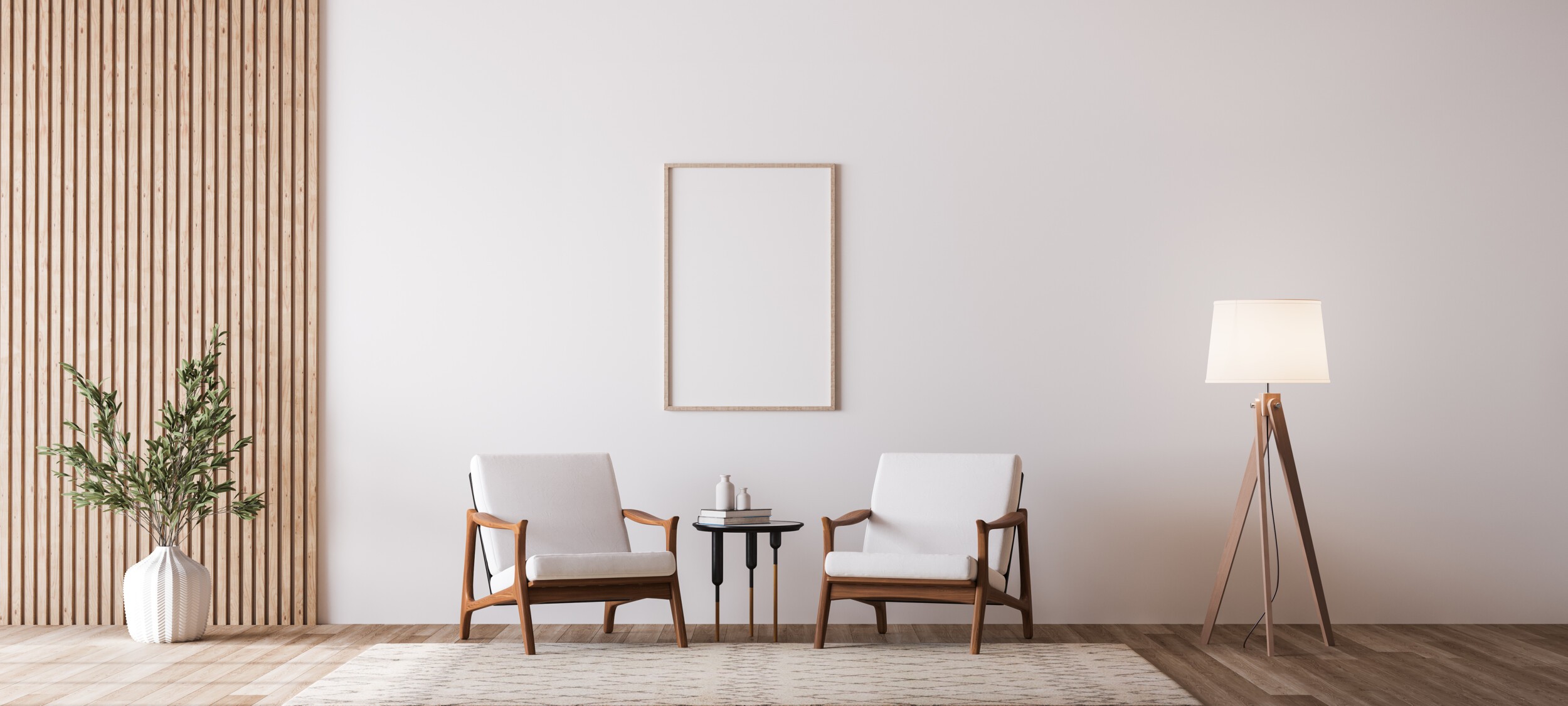
Because feng shui is more about rearranging your existing items rather than buying new specific pieces that follow a certain style, it’s important to extend your decluttering process to your furniture.
However, if you’re planning on decorating a new house from scratch or changing your current décor, we recommend that you choose pieces with simple and clean lines without excessive decorative elements.
Just like decluttering, this will also help you avoid a cluttered feel by maintaining a visual flow that’s free from distractions.
A feng shui palette
To feng shui your palette, create one that’s inspired by the five elements of this style, such as:
- the brown and green of wood
- the grays and whites of metal
- earthy tones like yellow, orange, and beige
- the blue and light-blue shades of water
- the flaming red of fire
Of course, this doesn’t mean that you should include all of them in every room!
For the most harmonious results, choose neutral tones for your primary and, potentially, secondary colors, and pick one or two brighter accents for every room.
Think green
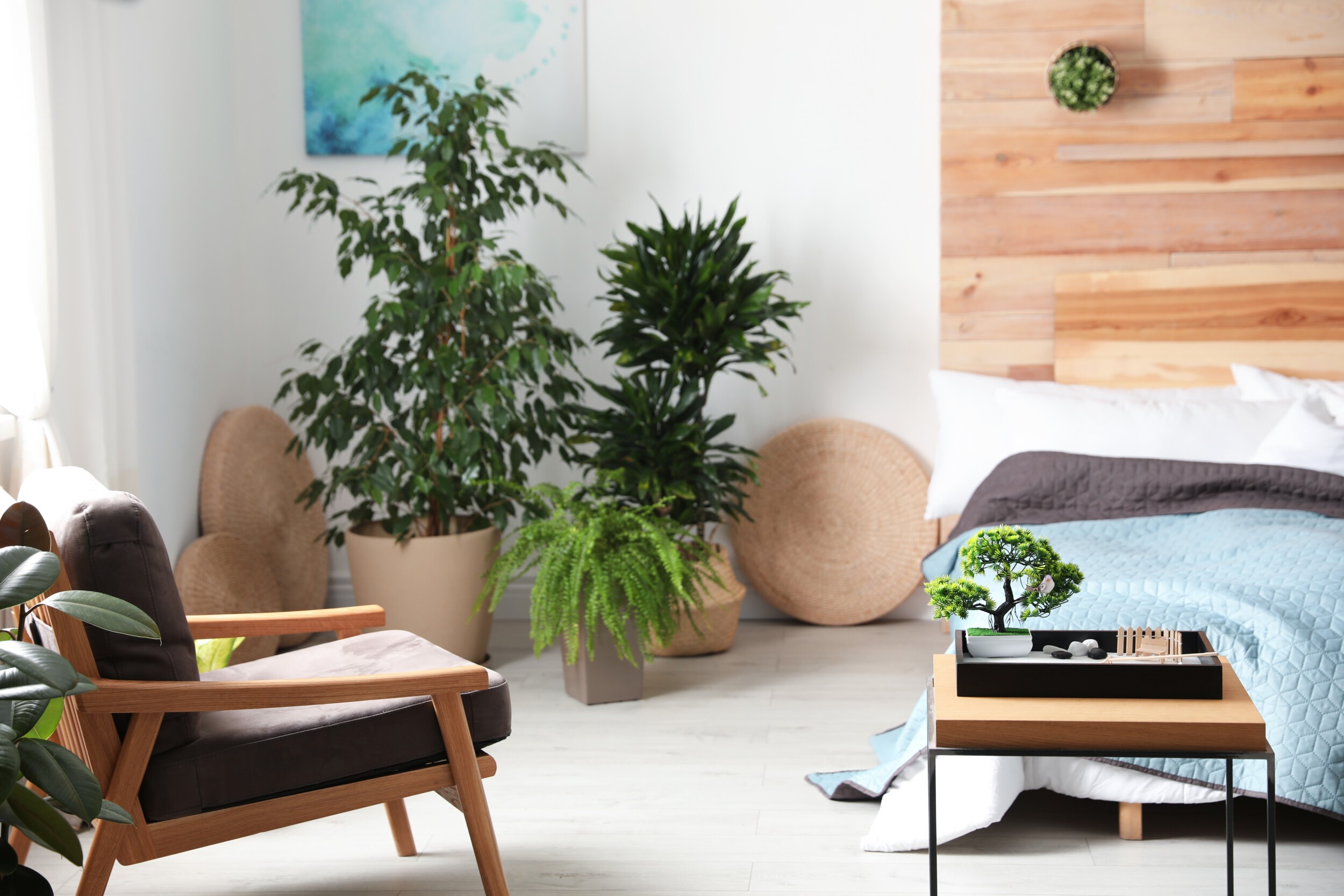
As well as incorporating it in your palette when you can, don’t forget to bring the element of wood to life with some actual plants.
They will add to your sense of balance by purifying your air, both because they give you oxygen and because they’ll absorb toxins and the electrical pollution caused by your appliances.
Here’s the tricky part, though: too many plants could end up feeling like clutter!
A handy solution is to choose fewer but bigger ones instead.
Embrace light
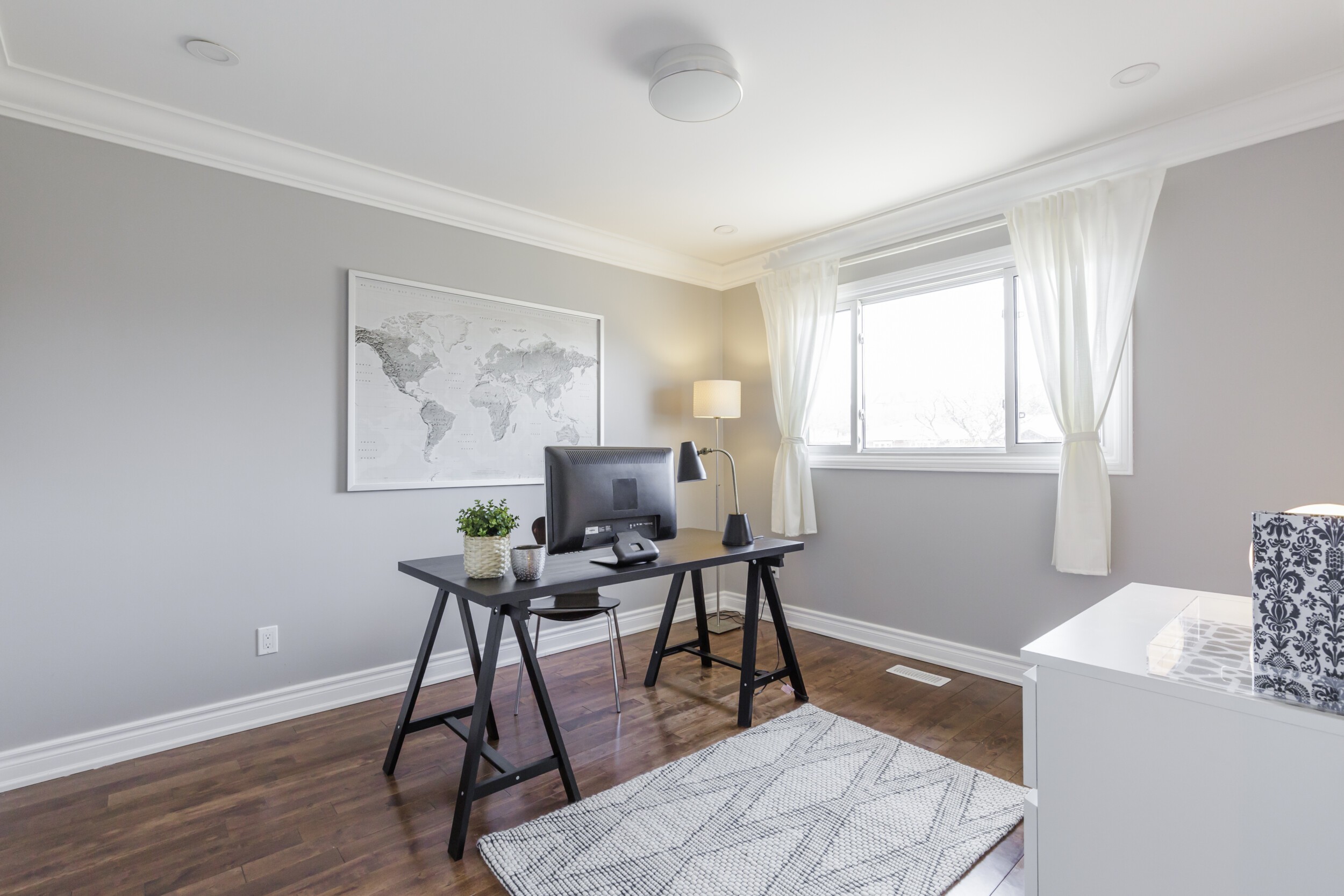
At a first glance, your windows seem to pose a problem since they involve two contrasting aspects of feng shui:
- Celebrating and relying on natural light as much as possible
- Preventing your energy from leaving the house
A dilemma? Not really: the trick is to opt for sheer curtains that will let plenty of light in while keeping your energy inside your home.
Use the right shapes
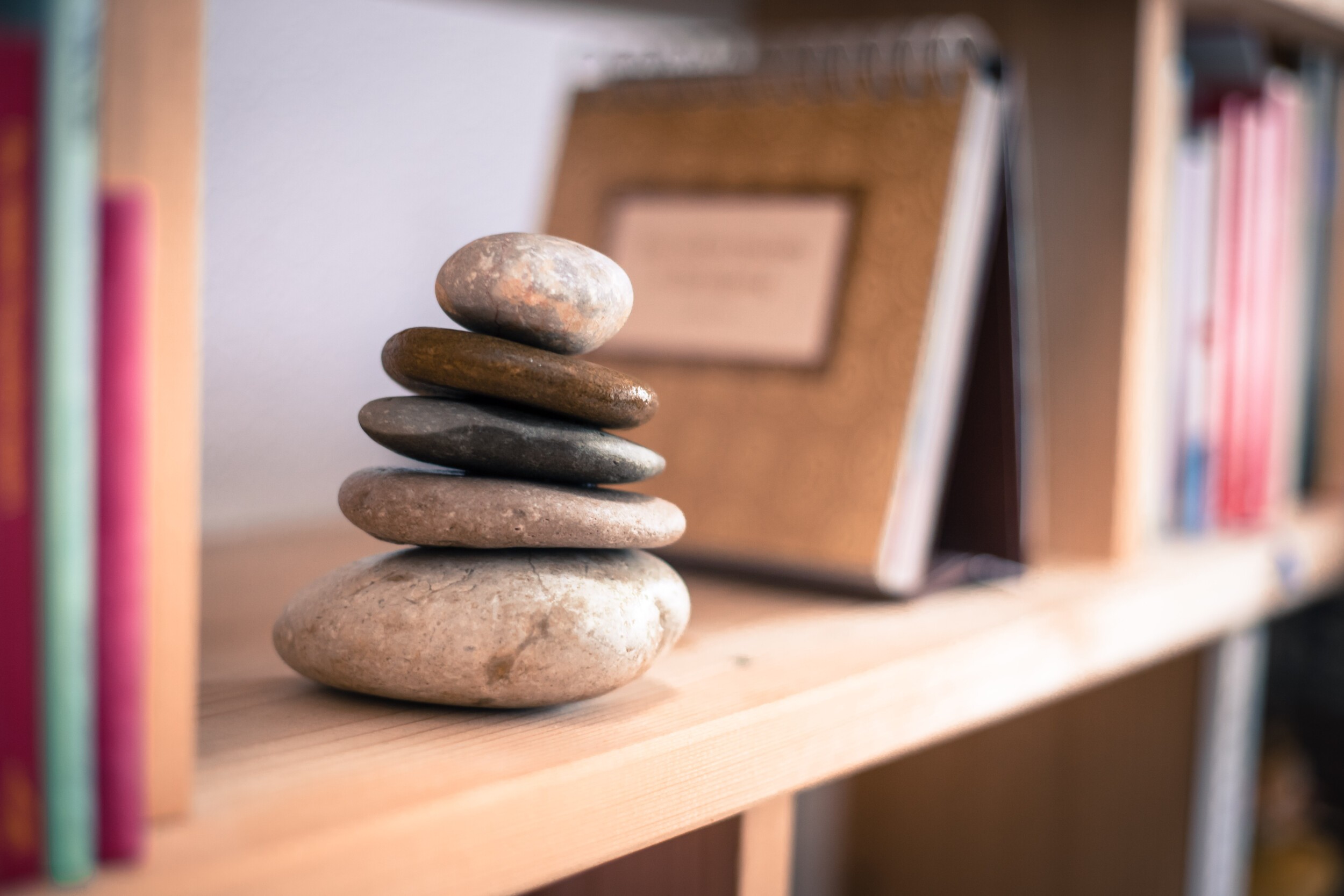
From furniture to decorative pieces, try and prioritize shapes with clean lines (like squares and rectangles) or imperfect natural ones like pebble shapes.
We recommend avoiding an abundance of triangles and circles unless they can help you achieve a specific feel; for example, a round coffee table will facilitate conversation and help you and your guests feel connected when sitting in your living room.
Use natural & reflective materials
To promote even more balance with the five elements of feng shui, focus on natural materials as much as possible.
You most certainly can’t go wrong with wooden furniture and decorative pieces.
Other key materials of feng shui are:
- Mirrored surfaces
- Rugs made of natural fibers like sisal and jute
- Crystals
- Earthenware
A few important rules for some specific rooms
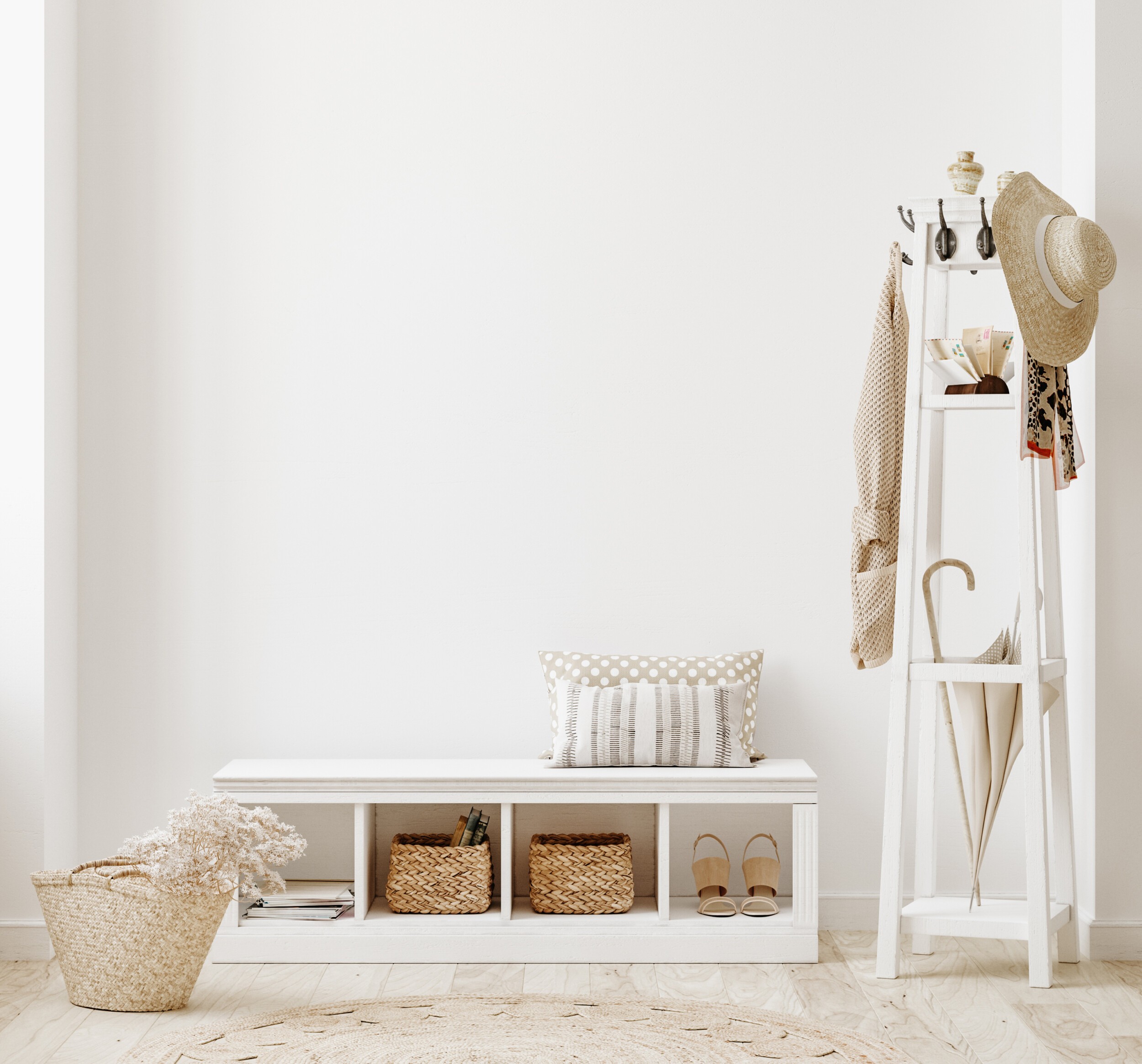
While you can apply the more generic practices and tips that we’ve covered so far to any part of your house, be sure to keep these points in mind for a few specific rooms:
- Your entrance is perhaps the most important part of a feng shui home since it’s the portal for your chi: it must be clean and free from clutter or obstacles such as shoes lying on the floor. Plus, the first thing you see when coming back home will set the tone for the rest of your house, so make it memorable and meaningful (for example, by adding a plant or a special artwork)
- Try and emphasize the communal element of eating together in your dining room, and consider making your table more attractive with a pot of freshly cut flowers
- The command position is key in your living room and bedroom: it consists of placing items of furniture like beds and sofas in a way that ensures a clear vision of the rest of the room and, especially, the door. This will reinforce a sense of security and control. For example, you should place your headboard against the wall and leave a minimum of 2 feet around its sides
- Another feng shui practice involves keeping your toilet seat shut whenever you’re not using it to prevent your chi from escaping or being compromised
Signature elements of a feng shui home
We hope that things are clearer by now: feng shui isn’t a specific style, but rather a way of rearranging your most meaningful belongings.
Still, we can’t argue against the fact that certain elements will can bring more positive energy into your home and give it a feng shui boost:
- Opened doors or sliding panels
- Open-plan rooms
- Large plants
- Water features
- A meaningful welcome mat
- Rugs
- Candles
- Essential oil diffusers for aromatherapy
- If relevant, spiritual reminders like a small Buddha statue

